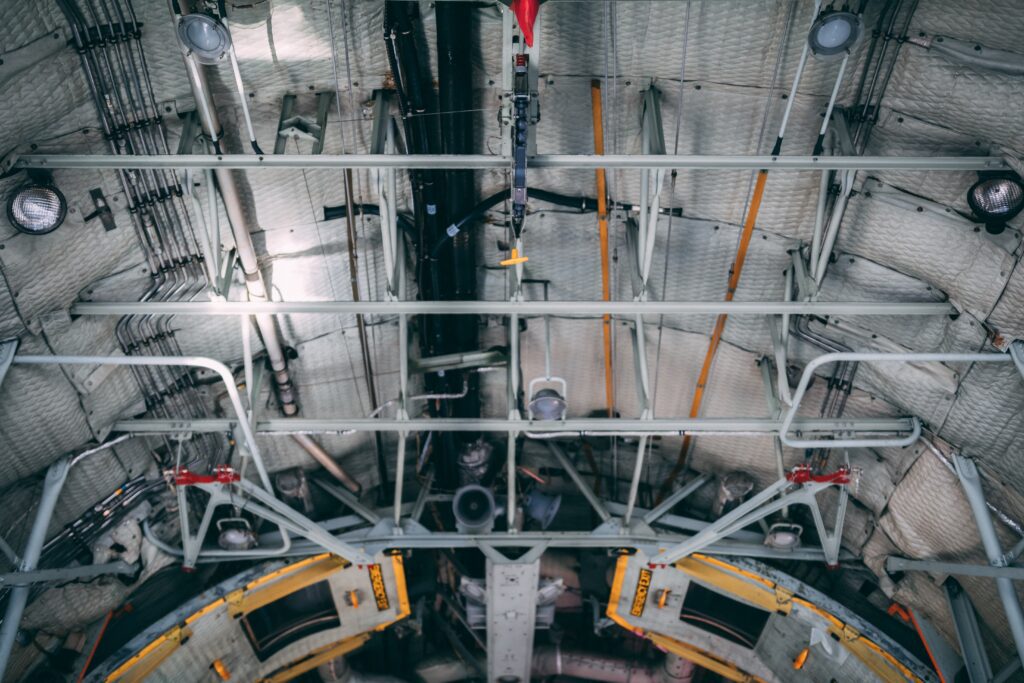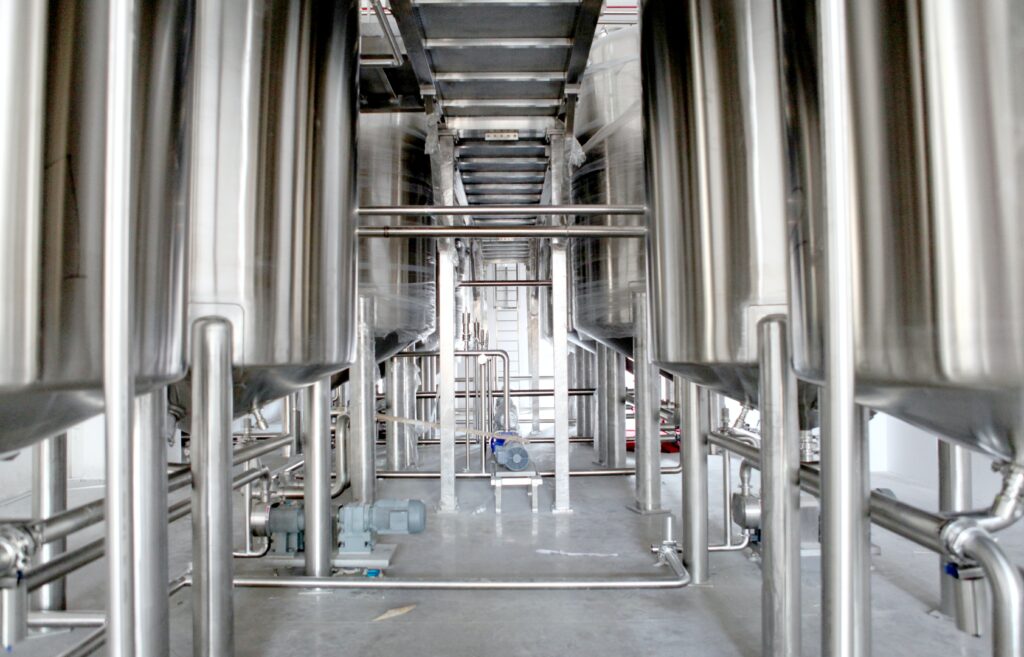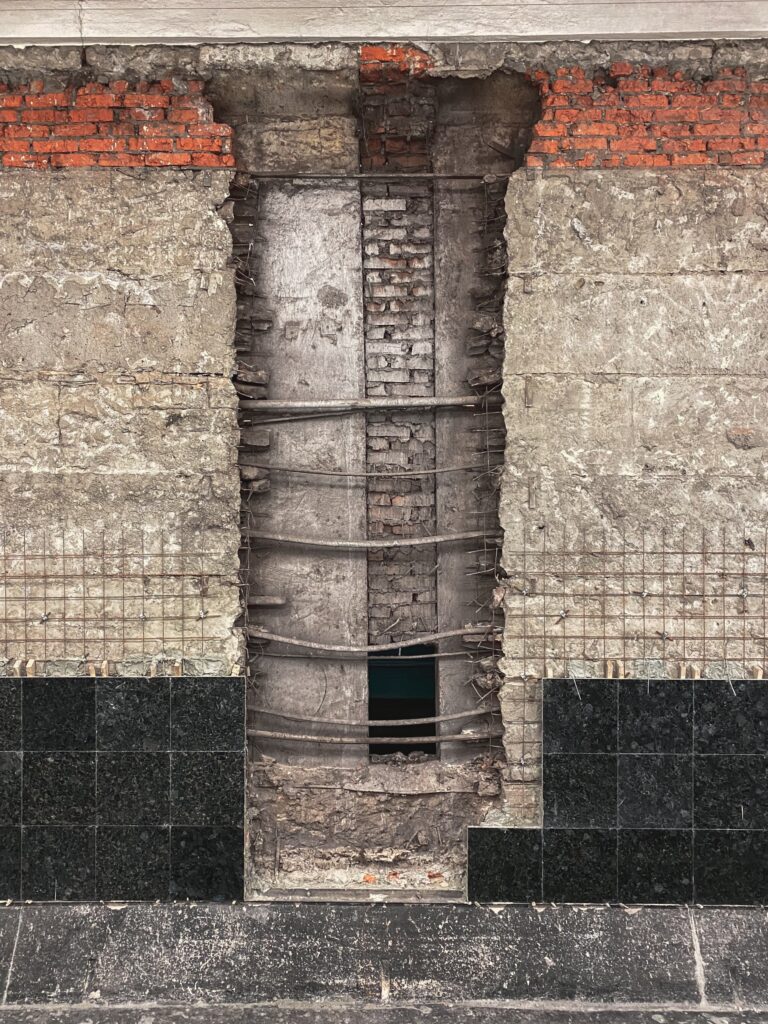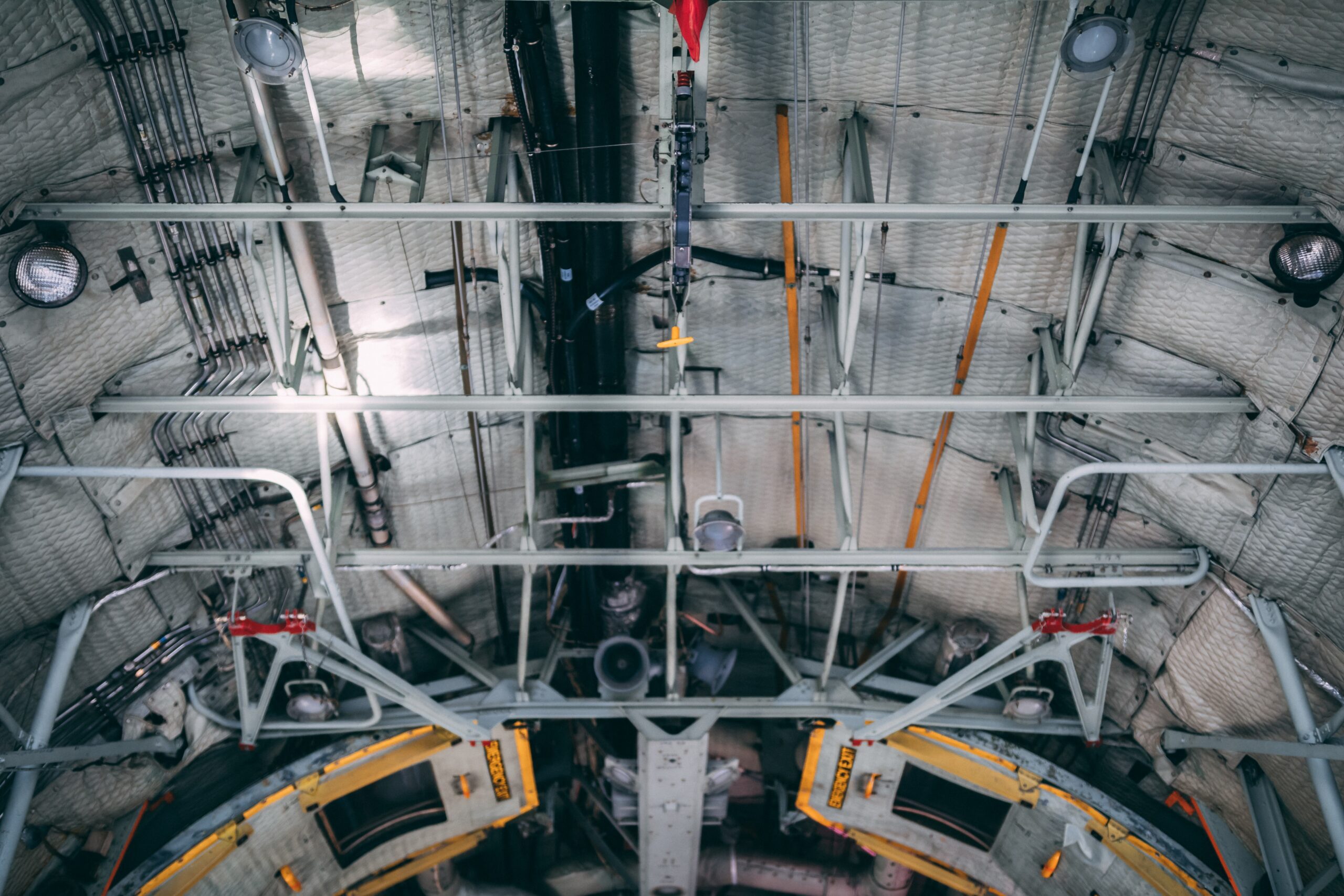In our article, “The Importance Of Priming PVC Pipes: A Guide To Proper Gluing,” we explore why priming PVC pipes is an essential step in the gluing process. Without proper priming, the strength and durability of PVC pipe joints can be compromised, leading to leaks, breaks, and costly repairs. We will delve into the reasons why priming is necessary, the materials needed, and step-by-step instructions to ensure a successful and long-lasting bond. Whether you are a seasoned DIYer or just starting out with plumbing projects, this guide will provide you with all the information you need to confidently tackle PVC pipe gluing.



This image is property of images.unsplash.com.
Understanding PVC Pipes
PVC pipes, or polyvinyl chloride pipes, are a popular choice for plumbing applications due to their durability, affordability, and versatility. These pipes are made from a type of plastic known as PVC, which is known for its strength and resistance to corrosion. PVC pipes are commonly used for water supply systems, drainage systems, irrigation networks, and even in the construction industry for electrical conduit installations.
Common Uses of PVC Pipes
PVC pipes have a wide range of applications in various industries. In residential settings, PVC pipes are often used for plumbing systems to transport water to sinks, toilets, and showers. They are also commonly used in underground drainage systems to effectively channel rainwater away from buildings. PVC pipes are also used for irrigation systems in farms and gardens, allowing for the efficient distribution of water to crops and plants. Finally, PVC pipes are utilized in the construction industry for electrical conduit installations, providing a safe and reliable way to house electrical wires.
Benefits of PVC Pipes
One of the major benefits of PVC pipes is their durability. PVC pipes are resistant to corrosion, which means they can withstand long-term exposure to moisture without deteriorating. This makes them an excellent choice for underground applications where pipes may come into contact with soil, water, and other corrosive substances. Additionally, PVC pipes have a smooth interior surface, which allows for efficient water flow and prevents the accumulation of debris or minerals. PVC pipes are also relatively lightweight, making them easy to transport and install. Lastly, PVC pipes are affordable, which makes them a cost-effective option for various plumbing and construction projects.



This image is property of images.unsplash.com.
Potential issues with PVC pipes
While PVC pipes have numerous advantages, there are a few potential issues to be aware of. One such issue is the potential for PVC pipes to become brittle over time, especially when exposed to extreme heat or sunlight. This can result in the pipes cracking or breaking under pressure. Additionally, PVC pipes can be susceptible to damage from certain chemicals, such as those found in solvents or gasoline. It is important to ensure that PVC pipes are not used in applications where they will come into contact with these types of substances. Finally, improper installation or gluing techniques can lead to leaks or pipe failure. It is crucial to follow proper procedures when using PVC pipes to prevent these issues from occurring.
The Gluing Process for PVC Pipes
Why is gluing necessary?
Gluing PVC pipes is necessary to create a secure and leak-free connection between pipes and fittings. Unlike metal pipes, which can be threaded together, PVC pipes require adhesive bonding to join them together. The gluing process ensures that the pipes are firmly attached to the fittings, creating a tight seal that prevents water leakage. It is important to use the appropriate glue and follow the recommended procedures to achieve a strong bond between PVC pipes.
Understanding the components of PVC pipe glue
PVC pipe glue, also known as solvent cement, is composed of several components that work together to create a strong bond. The main ingredient in PVC glue is a solvent, such as tetrahydrofuran (THF), which dissolves the surface of the PVC pipe and fitting, allowing them to fuse together. The solvent is combined with resin, which provides the adhesive properties and helps establish a durable bond. Additionally, PVC pipe glue may contain other additives, such as stabilizers or fillers, to enhance its performance.
Step-by-step guide to gluing PVC pipes
To properly glue PVC pipes, follow these steps:
-
Prepare the pipes and fittings: Clean the surfaces of the pipes and fittings to remove any dirt, grease, or debris. Use a clean cloth or abrasive pad and PVC cleaner to ensure a smooth and clean surface.
-
Apply primer: Apply a coat of PVC primer to both the pipe and fitting surfaces. The primer helps open up the pores of the PVC, allowing for better adhesion of the glue. Allow the primer to dry for the recommended time.
-
Apply glue: Using an applicator, apply a thin and even layer of PVC glue to both the pipe and fitting surfaces. Be careful not to apply too much glue, as it may result in a messy and weak bond.
-
Join the pipes: Immediately after applying the glue, join the pipe and fitting together, ensuring a proper fit. Twist the pipe slightly to distribute the glue evenly and ensure a secure bond.
-
Hold and cure: Hold the pipe and fitting together firmly for a few seconds to allow the glue to set. Follow the manufacturer’s instructions for the recommended curing time. It is important to avoid any movement or stress on the joint during this period to prevent a weak bond.
-
Test the joint: Once the glue has fully cured, test the joint for any leaks by running water through the pipes. If there are no signs of leakage, the gluing process was successful.
Why Priming is Crucial in the Gluing Process
Defining priming
Priming is an essential step in the PVC gluing process that involves applying a primer to the surfaces of the PVC pipe and fitting before applying the glue. The primer prepares the PVC surface by softening and cleaning it, allowing for better adhesion of the glue. It also helps remove any contaminants or oils that may hinder the bonding process.
The role of priming in the adhesion process
Priming plays a crucial role in ensuring a strong and durable bond between PVC pipes and fittings. The primer softens the surface of the PVC, allowing the solvent in the glue to penetrate and dissolve the plastic. This creates a molecular bond, which results in a secure and leak-free joint. Without proper priming, the glue may not adhere properly to the PVC surface, leading to weak bonds and potential leaks.
Consequences of skipping the priming process
Skipping the priming process can have several negative consequences. Without priming, the solvent in the PVC glue may not fully penetrate the PVC surface, resulting in a weak bond. This weak bond can lead to leaks or pipe failure over time, especially under high pressure or temperature conditions. Additionally, without priming, the glue may not bond evenly to the PVC surface, resulting in an uneven distribution of stress and potential weak points in the joint. Overall, skipping the priming process can compromise the integrity and longevity of the PVC pipe connection.



This image is property of images.unsplash.com.
Types of Primers for PVC Pipes
Varieties of primers available
There are various types of primers available for priming PVC pipes. These primers may vary in terms of their composition and application methods. For example, some primers are formulated specifically for PVC pipes, while others may be suitable for other types of plastics as well. Additionally, primers may come in different forms, such as liquid or brush-on primers. It is important to choose a primer that is compatible with the PVC material and suitable for the specific application.
How to choose the right primer
When choosing a primer for PVC pipes, consider the following factors:
-
Compatibility: Ensure that the primer is compatible with PVC pipes. Check the manufacturer’s specifications or consult with a plumbing professional to confirm compatibility.
-
Application method: Choose a primer that is easy to apply and suits your preferred application method. Liquid primers can be applied with a brush or an applicator, while brush-on primers offer more control over the application.
-
Drying time: Consider the drying time of the primer. Some primers may dry quickly, allowing for faster gluing, while others may require a longer drying time.
-
Brand reputation: Research and choose a primer from a reputable brand that is known for its quality and performance.
Popular primer brands in the market
Some popular primer brands for PVC pipes include:
-
Oatey: Oatey is a well-known brand that offers a range of primers specifically designed for PVC pipes. Their primers are known for their fast-drying properties and ability to create strong bonds.
-
Christy’s: Christy’s is another reputable brand that provides primers for PVC pipes. Their primers are known for their compatibility with a wide range of PVC materials and reliable performance.
-
Hercules: Hercules offers primers that are designed to prepare PVC surfaces for gluing. Their primers are known for their effectiveness in creating strong adhesion between PVC pipes and fittings.
When selecting a primer, it is important to read product labels, follow manufacturer recommendations, and consider the specific requirements of your PVC pipe project.
How to Apply Primer on PVC Pipes
Instructions for preparing the pipe
Before applying primer on PVC pipes, it is necessary to prepare the pipe surfaces properly. Follow these instructions for preparing the pipe:
-
Clean the pipes: Use a clean cloth or abrasive pad to remove any dirt, grease, or debris from the pipe surface. Cleaning the pipes ensures that the primer can adhere to the PVC material effectively.
-
Remove any sharp edges: If there are any sharp edges or burrs on the pipe, use a file or sandpaper to smooth them out. This helps ensure a proper fit between the pipe and fitting.
-
Check for proper alignment: Ensure that the pipe is cut to the correct dimensions and properly aligned with the fitting or connection it will join. Proper alignment is essential for a secure and leak-free connection.
Steps to appropriately apply primer
Follow these steps to apply primer appropriately on PVC pipes:
-
Shake the primer: Shake the primer bottle or container thoroughly to ensure the contents are well mixed.
-
Apply primer to the pipe: Using an applicator, brush, or dauber, apply a generous coat of primer to the outer surface of the pipe. Ensure that the entire surface area is covered, including any fittings or connection points that will be joined.
-
Apply primer to the fitting: In addition to priming the pipe, apply primer to the inner surface of the fitting or connection point. Similar to the pipe, ensure that the entire surface area is covered.
-
Allow the primer to dry: Follow the manufacturer’s instructions for the recommended drying time. Typically, the primer will dry within a few minutes. It is important to wait until the primer is fully dry before proceeding with the gluing process.
Safety measures during primer application
When applying primer on PVC pipes, it is essential to take certain safety measures:
-
Work in a well-ventilated area: Primers contain volatile chemicals that can release strong odors. Ensure that the area is well-ventilated to avoid inhaling harmful fumes. Open windows or use a fan to improve air circulation.
-
Wear protective gear: Wear gloves, safety glasses, and a respiratory mask to protect your skin, eyes, and respiratory system from potential exposure to primer chemicals. Refer to the manufacturer’s safety instructions for specific protective gear recommendations.
-
Avoid open flames and sparks: Primers are flammable, so it is crucial to work away from open flames or sparks. Do not smoke or use any ignition sources near the primer or while working with PVC pipes.
Precautions Before Gluing PVC Pipes
Knowing the suitable weather conditions for gluing
Before gluing PVC pipes, it is important to consider the weather conditions. Gluing PVC pipes is ideally done under dry weather conditions with moderate temperatures. High humidity or cold temperatures can affect the gluing process and may result in weaker bonds. Therefore, choose a day with low humidity and a temperature within the recommended range specified by the manufacturer.
Ensuring the right pipe dimensions
To ensure a proper and secure fit, it is crucial to use the correct pipe dimensions when gluing PVC pipes. Measure the pipe accurately and match it with the appropriate fitting or connection point. Using pipes with incorrect dimensions can result in loose connections or leaks over time. It is best to double-check the measurements and consult a plumbing professional if necessary.
Why clean and dry pipes are critical
Cleanliness and dryness are critical factors for a successful gluing process. Before gluing PVC pipes, ensure that the surfaces of the pipes and fittings are clean and free from any contaminants, such as dirt, grease, or moisture. Contaminants can interfere with the bonding process and weaken the joint. Additionally, make sure the pipes are dry to prevent any moisture from interfering with the solvent in the glue. Use a clean cloth or abrasive pad to dry the pipes thoroughly before applying primer and glue.
Trouble Shooting Gluing Issues
Common gluing problems
While gluing PVC pipes can be a straightforward process, certain issues may arise. Common gluing problems include:
-
Weak bond: A weak bond can occur if the primer or glue is not applied correctly, or if the surfaces are not properly prepared. This can result in leaks or pipe failure over time.
-
Excessive glue: Using too much glue can create a messy joint and weaken the bond. Excessive glue may also increase curing time and result in longer drying periods.
-
Poor alignment: Improper alignment between pipes and fittings can lead to leaks or failed connections. It is essential to ensure proper alignment before applying primer and glue.
How to fix or redo a bad glue job
If a bad glue job has occurred, it is possible to fix or redo the connection. Follow these steps:
-
Disassemble the joint: Carefully separate the pipes and fittings that were glued together. Use a pipe cutter or hacksaw to remove the glued section if necessary.
-
Remove residual glue: Clean the pipes and fittings, making sure to remove any residual glue. Use a clean cloth or abrasive pad and PVC cleaner to thoroughly clean the surfaces.
-
Reapply primer: Apply a fresh coat of primer to the cleaned surfaces of the pipes and fittings. Follow the appropriate priming process outlined earlier in this guide.
-
Reapply glue: Apply a thin and even layer of PVC glue to both the pipe and fitting surfaces. Follow the recommended gluing process to create a secure bond.
-
Reassemble the joint: Join the pipes and fittings together, ensuring proper alignment. Hold the joint firmly for a few seconds to allow the glue to set. Follow the recommended curing time before testing for leaks.
When to seek professional help
While gluing PVC pipes can be a DIY project, there may be situations where it is best to seek professional help. Consider consulting a plumbing professional if:
- You are unsure about the proper priming and gluing process.
- The pipes and fittings are in complex or hard-to-reach locations.
- The project involves high-pressure systems or critical applications that require expert knowledge.
A professional plumber will have the experience and expertise to ensure a secure and reliable connection when working with PVC pipes.
Frequently Asked Questions About Priming and Gluing PVC Pipes
What happens if you don’t prime PVC before gluing?
If you don’t prime PVC before gluing, the bond between the pipes and fittings may be weak and prone to leaks. The primer prepares the PVC surface by softening and cleaning it, ensuring better adhesion of the glue. Without proper priming, the glue may not fully penetrate the PVC, resulting in a weak bond and potential joint failure.
Can PVC be glued without primer?
While it is possible to glue PVC pipes without primer, it is not recommended. Priming is a critical step in the gluing process as it prepares the PVC surface for the solvent in the glue. Skipping the priming process can result in a weak bond and compromised joint integrity. It is best to adhere to the recommended priming and gluing procedures to ensure a strong and durable connection.
How long after priming can PVC be glued?
The drying time for priming PVC pipes can vary depending on the specific primer and environmental conditions. It is essential to follow the manufacturer’s instructions for the recommended drying time. Typically, primers dry within a few minutes, but it is advisable to wait until the primer is fully dry and no longer tacky before applying the glue. If the primer is not adequately dry, it may interfere with the bonding process and result in weaker joints.
Is there a substitute for PVC primer?
There is no recommended substitute for PVC primer that can provide the same level of adhesion and bond strength. Primers are specifically designed to prepare PVC surfaces for gluing by softening and cleaning them. This ensures better adhesion of the glue and creates a strong bond. While alternative methods may claim to provide similar results, it is best to use the recommended primer for PVC pipes to ensure the integrity and longevity of the connection.
Safety Tips When Working with PVC Pipes
Using protective gear
When working with PVC pipes and gluing materials, it is important to prioritize safety and use appropriate protective gear. Wear gloves to protect your hands from potential chemical exposure or any sharp edges on the pipes. Safety glasses should be worn to shield your eyes from flying debris or accidental splashes of primer or glue. Additionally, wearing a respiratory mask can help prevent inhalation of harmful fumes.
Proper storage of primer and glue
To maintain the effectiveness of PVC primer and glue, it is crucial to store them properly. Store these materials in a cool and dry area, away from direct sunlight or extreme temperatures. Ensure that the containers are tightly sealed to prevent evaporation or leakage. Keep them out of reach of children and pets to avoid any accidental exposure.
Remedial methods for primer and glue exposure
In the event of accidental exposure to PVC primer or glue, it is important to take appropriate remedial measures. If the primer or glue comes into contact with the skin, immediately wash the affected area with soap and water. If it comes into contact with the eyes, flush the eyes with water for at least 15 minutes and seek medical attention. If ingested, seek medical help immediately. Always refer to the manufacturer’s safety instructions and seek professional medical advice if needed.
The Long-Term Benefits of Proper Gluing
Durability benefits
Properly glued PVC pipes provide long-lasting durability. The strong bond created by the adhesive ensures that the pipes remain securely connected, even under high-pressure conditions. This durability reduces the risk of leaks, cracks, or pipe failure, minimizing the need for frequent repairs or replacements.
Reduced chance of leaks
One of the primary purposes of gluing PVC pipes is to prevent leaks. Properly glued pipes create a tight and reliable seal that prevents water or fluid from escaping. This reduces the risk of water damage to surrounding structures and maintains the efficiency of your plumbing or irrigation systems.
Constant fluid pressure with well-glued pipes
Well-glued PVC pipes maintain consistent fluid pressure throughout the system. The secure bond between pipes and fittings ensures a continuous flow without any loss of pressure. This is crucial for various applications, such as water supply systems or irrigation networks, where consistent fluid pressure is necessary for optimum performance.
In conclusion, proper gluing of PVC pipes is essential for creating secure and leak-free connections. Priming plays a crucial role in the gluing process by preparing the PVC surface for better adhesion. By following the recommended procedures, using suitable primers, and taking necessary safety precautions, you can ensure strong and durable PVC pipe connections for all your plumbing and construction needs.
